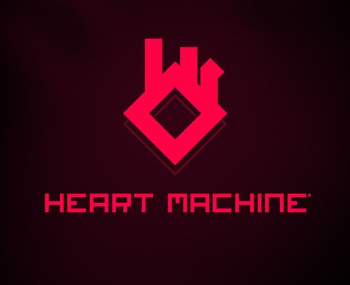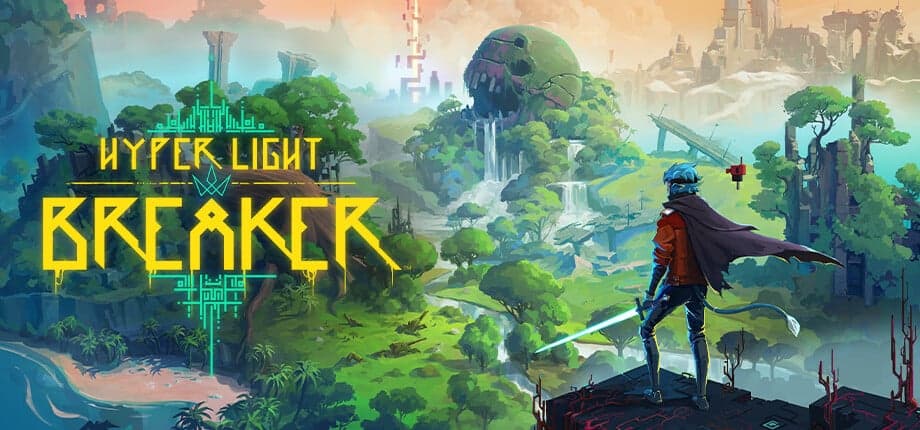Hyper Light Breaker: When Ambition Breaks Hearts – A Christopher Odd Perspective Well, folks, it’s Christopher Odd here, and I'm still processing the news about Hyper Light Breaker.

Well, folks, it’s Christopher Odd here, and I'm still processing the news about Hyper Light Breaker. As someone who spent countless hours lost in the neon-drenched world of Hyper Light Drifter – remember those streams, the deep dives into the lore, the sheer joy of mastering its combat? – I was incredibly hyped for Heart Machine's follow-up. My anticipation was sky-high. Seeing that dream fade, well, it stings.
The cancellation of Hyper Light Breaker isn't just a setback for Heart Machine; it's a stark reminder of the tightrope indie developers walk between artistic vision and market viability. Let's dive into what happened, and what it tells us about the current state of indie game development on PC.
A Departure from the Drifter's Path: The Vision of Hyper Light Breaker
Hyper Light Drifter was a masterpiece of atmosphere, combat, and visual storytelling. Its deliberate, almost punishing combat, coupled with a stunning world built from meticulously crafted pixels, resonated deeply with players, myself included. That synthwave soundtrack? Chef's kiss. It wasn't just a game; it was an experience.
So, when Heart Machine announced Hyper Light Breaker, a 3D open-world roguelite, it was… unexpected. The initial reveal was met with a mixed reception. The shift from the intimate, focused experience of Drifter to a sprawling, procedurally generated world was jarring for many.

Early Access Woes: A Crisis of Identity?
Early Access can be a blessing and a curse. On one hand, it offers invaluable feedback and funding. On the other, it can pressure developers to chase trends or make compromises that ultimately dilute their vision.
The Early Access release of Hyper Light Breaker brought a wave of criticism. Many felt the game lacked the distinct atmosphere and tight gameplay loop that made Drifter so special. The open world, instead of feeling expansive and inviting, often felt generic and empty. The procedural generation, while intended to add replayability, seemed to sacrifice the handcrafted detail that was so crucial to the original game's charm. The shift in art style, from vibrant pixel art to a more conventional 3D aesthetic, was a major point of contention.

Were Heart Machine too responsive to this feedback? Did they try to be all things to all people, losing sight of what made their previous game so unique? It's a question worth asking.
The Indie Squeeze: Chasing Trends vs. Staying True
The indie game development scene is a tough place. Financial pressures are immense. There's a constant temptation to chase trends, to emulate successful formulas in the hopes of replicating their success. Roguelites, open-world games – these are popular genres, and it's understandable why Heart Machine might have felt the pull to incorporate these elements.
However, pivoting too drastically can be a dangerous game. It risks alienating your existing fanbase while failing to attract a new one. Did the pressure to appeal to a broader audience ultimately contribute to Hyper Light Breaker's downfall? It's hard to say for sure, but it's a factor worth considering.

Funding and the Shifting Sands of Genre
I can only speculate, but I wonder about the funding challenges Heart Machine might have faced. Did they initially seek crowdfunding based on the Hyper Light Drifter legacy, only to find that investors were more interested in a project that aligned with current market trends? Did they need to secure venture capital, and did that VC funding come with strings attached, pushing them towards a more "marketable" genre?
These are tough questions, and we may never know the full story. But it highlights the difficult position many indie developers find themselves in – needing funding to survive, but potentially sacrificing their artistic vision in the process.
Alternative Paths: What Could Have Been?
Hindsight is 20/20, of course. But looking back, what alternative strategies could Heart Machine have explored?
- Smaller-Scale Projects: Perhaps a smaller, more focused game that built directly upon the foundations of Hyper Light Drifter. A prequel, a side story, or even just a refinement of the original formula.
- Iterative Development: A more gradual evolution of the Hyper Light universe. Instead of a complete genre shift, they could have experimented with new mechanics and features in smaller increments, gathering feedback along the way.
- Maintaining the Core Essence: Regardless of genre, preserving the distinct atmosphere, challenging combat, and visual storytelling that made Hyper Light Drifter so special should have been paramount.

Lessons Learned: The State of Indie Development
The cancellation of Hyper Light Breaker is a sobering reminder of the challenges facing indie developers today. It highlights the increasing difficulty of taking creative risks in a market driven by specific genre trends.

It underscores the importance of staying true to your vision, even amidst pressure to conform. It raises questions about the role of Early Access and the potential for player feedback to steer development in unintended directions. And it serves as a cautionary tale about the dangers of chasing trends at the expense of artistic integrity.
Ultimately, the loss of Hyper Light Breaker is a loss for all of us who appreciate innovative and unique gaming experiences. I genuinely hope Heart Machine can regroup and find a way to channel their talent and creativity into new and exciting projects. The industry needs more studios willing to take risks and push boundaries, even if those risks don't always pay off. We need more Drifters, and less… well, less of what Hyper Light Breaker was becoming.

Thanks for listening, folks. Let me know your thoughts in the comments. What did you think of the Hyper Light Breaker reveal? And what lessons can indie developers learn from this experience? Let's have a conversation.

